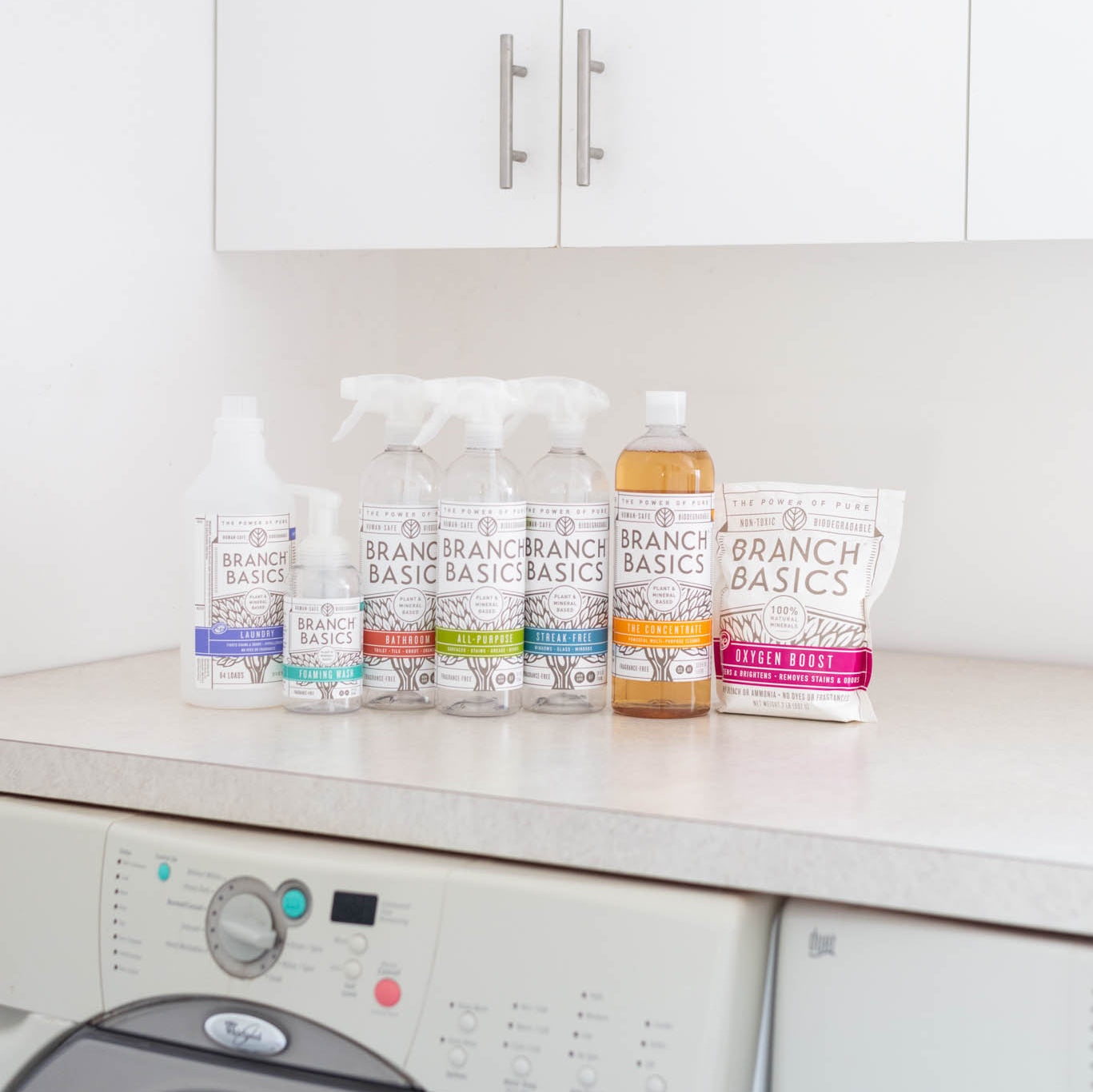Is Sodium Hydroxide Toxic? Here’s What You Should Know | Branch Basics

The empowerment that comes from learning how to detoxify your home often leads people to start DIYing various home and personal care products.
Soap making, for example, is a popular DIY hobby that allows you to get creative while creating a functional product for your home or to sell.
However, many people end up shying away from soap-making due to concerns about sodium hydroxide, also known as lye.
You need sodium hydroxide to make bar soap…but isn’t it highly toxic?
The quick answer is yes. Sodium hydroxide is a highly caustic chemical that can cause severe skin and tissue burns and reactions.
So, how can a natural soap claim to be natural if made with a dangerous chemical? Isn’t there a safer substitute?
In this article, we’ll cover the basics on sodium hydroxide toxicity, products that use or contain sodium hydroxide (and why concentration is key), why it is used in soap making, and lye alternatives.
What is Sodium Hydroxide?
Sodium hydroxide is also known as lye or caustic soda.
Its role in soap making is to create saponification when mixed with fat or oil.
Saponification is the process of breaking down fats and oils into soap and other products by heating them with a base, in this case, sodium hydroxide.
Products That Typically Use Sodium Hydroxide
Sodium hydroxide is used in various products, including:
- Drain cleaners
- Detergents
- Cleaning products
- Oven cleaners
- Bar soap
- Personal care products
- As a food curing agent
- Bleach and bleach-based cleaning and laundry products
- In paper making
- In paper recycling
- In pickling
- Water treatment
- Certain medications for cholesterol, pain management, and blood clotting.
It is important to note these products contain sodium hydroxide at different levels.
Some, like drain cleaners, have high levels of sodium hydroxide, making them very dangerous.
Others, like natural bar soaps, will not contain any residual sodium hydroxide when properly processed.
This is why human-safe soaps can be called “natural.” In the end, they should contain no sodium hydroxide.
Why Is Sodium Hydroxide Toxic?
Sodium hydroxide is toxic due to its high alkalinity.
The toxic effects are worse for children due to their small size and underdeveloped organs.
For this reason, one should never use sodium hydroxide when children are present, as they run a higher risk of inhalation toxicity.
This includes keeping soap-making supplies, detergents, and synthetic chemical-based cleaning products out of the reach of children.
Is There a Substitute for Sodium Hydroxide?
No matter what you may read, you need pure sodium hydroxide for making bar soap, or you won’t get the chemical reaction necessary.
Some hard-core DIYers will go the old-fashioned route by making their own sodium hydroxide/lye from wood ash.
This very laborious process can work (our ancestors did this) but does not produce a lye consistent in its concentration.
This makes it potentially dangerous as you won’t know how much you’re adding, which can result in a product with too much lye, which can cause harm.
For this reason, the majority of soap makers do not recommend DIY lye and rely on 100% pure sodium hydroxide.
If you’re only concerned about the possible dangers of working with lye and not its presence in the soap-making process (remember, it should all be gone by the time the soap is cured), then you can buy a ready-to-pour natural solution, which already has the lye added.
However, if you’d rather not deal with sodium hydroxide at all, you can get around it by making liquid soap using natural or naturally derived synthetic surfactants. Surfactants act like emulsifiers, allowing water to mix with soap, detergents, and other cleaning agents.
Our favorite all-around human-safe and gentle surfactants are Coco Glucoside and Decyl Glucoside.
These naturally derived synthetic surfactants allow us to produce Branch Basics Concentrate, for example, without inconsistencies in performance, shelf-life, or appearance that can happen with non-synthetic plant surfactants.
Branch Basics Concentrate was designed as an all-in-one, human-safe, sodium hydroxide-free cleaning solution to replace every cleaning and laundry product in your home.
Our Starter Kits come with everything you need to make your own All-Purpose, Bathroom, Foaming Wash (for hands, face, baby, pets, and more), Streak-Free, Laundry, and custom cleaning dilutions. Simply add the designated amount of Concentrate plus water to the bottle, shake, use, and refill as needed.
For DIYers, however, one or a combination of different unrefined plant surfactants may provide enough mixing and foaming power.
These plants contain naturally high levels of saponins, which have a natural foaming ability.
We love using Soap Nuts, for example, as a sustainable DIY laundry detergent alternative.
Examples of unrefined plant surfactants include:
- Quillaja
- Soap nuts
- Shikakai powder
- Soapberry
- Soapwort
- Liquid yucca extract
Liquid castile soap is also a natural surfactant that can be used to create dozens of DIY products.
Toss the Toxins With Branch Basics
If you’re interested in sodium hydroxide-free cleaning, laundry, and personal care products, Branch Basics Premium Starter Kit, which has everything you need to clean your home, do your laundry, and wash your hands, face, and body (Foaming Wash dilution) without harmful synthetic chemicals.
We even offer a $5.00 Trial Kit that allows you to make a full-size bottle of All-Purpose cleaner to test us out.
For more information on human-safe cleaning, including DIY recipes, check out our Wellness Center for articles, guides, podcasts, courses, testimonials, and more.







